Blog

By Richard Seaman
•
January 18, 2023
Part of my holiday tradition is sending out letters to family and friends reflecting on the past year. This has been a tradition since 2006. I am sharing my letter for 2022 below, as I hope it may inspire you and encourage you to step out of your comfort zone. “ We cannot discover new horizons until we have the courage to lose sight of the shore.” Recently we cruised our boat from Annapolis, Maryland, to Stuart, Florida. One leg of the journey was a 32-hour, 300-mile offshore adventure from Hilton Head, South Carolina, to Stuart. The forecast was 15-25 knot winds and 2-4 foot waves, which in reality became 25-35 knot winds and 4-6 foot waves. Although the trip was relatively uneventful, it was my first overnight experience, losing sight of the shore and nearly everything else in the darkness of the night. As I took my first of two three-hour watches, I alternated from searching for lights on the horizon to observing possible targets on the radar and AIS instruments. My most memorable sightings were the incredibly bright stars on the port side of the boat, not nearly so on the starboard side where even 30 miles out, the lights of Florida lightened the darkness of the night sky. Having completed our overnight cruising adventure, I could not help but recall the above quote – attributed to several people, William Faulkner, Andre Gide, and even Christopher Columbus. This quote has been framed on my wall for many years. I always associated it with an unfulfilled desire to experience an overnight offshore crossing. While the saying is often quoted to inspire one to let go of the known and explore the unknown, I recently have related it to a much more subtle dynamic occurring in our contemporary culture. Our ability to discover new horizons in our daily lives is greatly diminished when our comfort zones are unconsciously reinforced. Yet is this not what we are experiencing continuously in this internet world? Are we not all victims tethered to the algorithms of our e-commerce and social media platforms? These algorithms deliver us not only the products they think we need but also those opinions and experiences that reinforce our comfort zones. And while the world continues to change rapidly around us, our social media sites keep us anchored to the comfortable shores of our little cove. In so many ways, we fail to recognize the scope of the world around us, waiting to be discovered. While that world may not be geographically distant, it is undoubtedly intellectually distant – obscured by the blinders of our respective cyberspace algorithms. Our vulnerability and addictiveness to the internet culture was recently highlighted to me by the director of a summer wilderness camp in northern Minnesota. We have supported this camp for young boys and girls for several decades because it offers these youth the opportunity to experience a beautiful natural world that offers much more personal development and enjoyment than smartphones and game consoles. However, in recent years, the camp has had to provide mental health support for young campers who exhibit mental and physical withdrawal symptoms for several days, when upon arrival at camp, they are asked to relinquish their smartphones – a manifestation of their very fear of “losing sight of the shore.” Many of us read George Orwell’s “ 1984 “, published in 1949. Orwell’s prophetic warnings are not dissimilar from the characteristics of today’s internet world. While today’s democratic governments do not appear to be “Big Brother,” our every action is easily tracked and categorized by the data gathering and data sharing nature embedded in our internet platforms. And while the apparent motivation for all this data tracking and sharing is commercially motivated, we are no longer the “customer” but have become the “product.” One of the political propaganda weapons created in Orwell’s “ 1984 ” is “Newspeak,” defined as
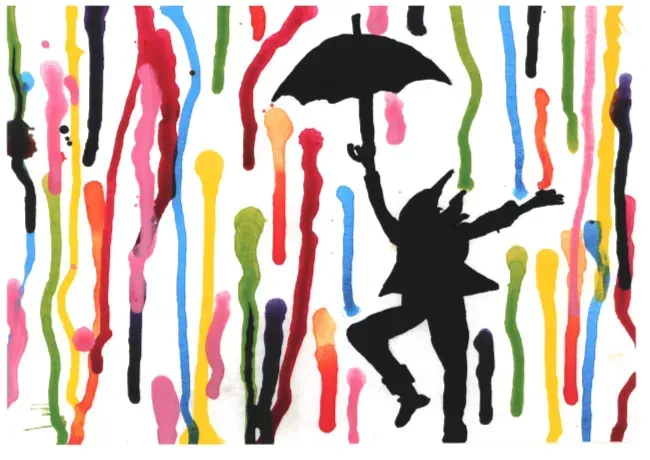
By Richard Seaman
•
December 21, 2020
During 2020, we have all faced unprecedented headwinds. We began the year alarmed by the damaging wildfires in Australia that later befell the western part of our own country. We experienced a record season for tropical storms that extended into November. All of this was overshadowed by the COVID-19 pandemic that has affected all of our lives since March. It has impacted our economic lives, our family lives, and our personal lives. We made significant economic and personal sacrifice to help “flatten the curve” last spring, only to have the virus return with a vengeance this fall. In the midst of it all, we have had one of the most challenging political environments of our lifetimes – where even wearing a mask in the middle of a contagious pandemic has been politicized. And we finish 2020 with a continuing chaotic and disputed presidential election. With headwinds like these, how can we be an optimist – let alone find a way to adjust our sails? But if we look around, we find that leaders everywhere have been “adjusting sails.” Much of this adjustment is the result of the creative innovation that is a unique part of our culture. Businesses of all sizes have adjusted their sails to provide creative options in product and service. For example, restaurants are utilizing digital platforms to expand their business through take-out and delivery. These innovations and the work-from-home options are made possible by technology platforms that have been developed over the past decade. Technology infrastructure like Zoom for meetings, Amazon for delivery, Netflix for entertainment, and DoorDash for delivery have provided the tools to help all of us adjust our sails, whether for our jobs, our children’s education, our personal entertainment, or the continuing connectivity to our families. These readily available software applications have been critical for keeping our economy up and running and offering some joy to our personal and family lives. One of the most remarkable technology developments of the past two decades is the Human Genome Project (HGP) which identified the DNA sequencing of the human cell. It is worthy to note that the initial funding for HGP began in 1987 under the Reagan administration and continued until its completion in 2003, shepherded by the National Institute of Health through several presidential administrations. The significance of this work plays a key role in the international efforts to combat the COVID-19 virus. The DNA sequence of the virus was available to the international community within weeks of the virus’ discovery in humans. Several pharmaceutical companies immediately began the vaccine development process. Since the virus was well defined by its DNA sequence, these companies were able to use a laser like approach to the vaccine development. This is the primary reason we are seeing very promising efficacy. This HGP technology platform represents an unprecedented international accomplishment. This technology will allow future vaccine candidates for nearly any infectious disease to be produced far more quickly and effectively because of this unique platform for formulation, purification, and production. Our culture of innovation, our optimism, and our faith in the future encourage us to adjust our sails as we navigate through these turbulent times of 2020, confident that in the not-too-distant future, calming seas are on the horizon. Recently our nine-year-old granddaughter, Sophie, gave Judy and me a gift with the following inscription:

By Richard Seaman
•
November 25, 2020
The headlines lately have been dominated by political news and pandemic updates. With so much uncertainty, it can be difficult to look into the end of this year and the beginning of the next with optimism. Just remember Kanter’s Law: Everything looks like a failure in the middle. I came across another quote recently that felt relevant to this moment: The pessimist complains about the wind. The optimist expects it to change. The leader adjusts the sails . – John Maxwell External circumstances being what they are, if you are in a leadership position in your organization, now is the time to be adjusting your sails. Sometimes you might have to do it daily as you and your leadership crew navigate the latest storms in our ongoing economic crisis. When I have been asked for advice by business leaders as they face COVID-19, I tell people that your ability to be successful in the coming months will be directly related to the quality of your ship and crew. Hopefully you have made appropriate investments in both prior to this moment. It is much more difficult to reactively institute appropriate business processes or build a new team when the economic environment is chaotic. The strength of your operation will always come down to the quality of your strategic planning. Is this a process you have in place? Have you invested in human capital such that you have people to rise to meet this moment? If so, you are more likely to survive the challenges of this economic environment, define your “new normal,” and resume your growth journey. Adjust the sails as appropriate, and then sail on.

By Richard Seaman
•
October 28, 2020
Family businesses have unique cultures. Multigenerational family businesses continue to thrive because they remain focused on the principles and values that define those unique cultures. These values may include innovation, work ethic, strong customer and supplier relationships, and dedication to associates. Companies that fail to be multigenerational often do so because they become disconnected and stray from their stated values and the principles of their founding story. This is not just true of family businesses. Any institution that thrives over many generations will be built on a defined set of values and principles. An excellent example of this is the United States of America. Unique values and principles are embedded in the Declaration of Independence, in our Constitution and its amendments, and in the many laws passed by our legislative houses and signed by our presidents. These values and principles have guided our country for centuries, through both good times and bad. However, in today’s cultural environment, influenced by competitive 24-hour news cycles and social media, it is easy to lose sight of and faith in our historic foundation. Nowhere is this more evident than in the current anxiety about Supreme Court appointments. Media speculation and coverage are driving fear that a single nominee will have a detrimental effect on lives, now and in the future. To engage in that fear though is to forget or ignore the basic principles upon which the country was founded. In their wisdom, our founding fathers created three branches of government to provide appropriate checks and balances and prevent the tyranny of lordship and dictatorship. There was significant innovation in the system of government they created; the unique elected legislative branch, which represents states equally in the Senate and by population in the House, is where our laws are intended to be created with oversight by an elected executive branch. While the president is responsible for giving final approval of the laws, he can always be overruled by Congress. Hence, laws can be created and rescinded by elected government representatives. The Judicial Branch was created to interpret and enforce the Constitution and, subsequently, the laws created. Our Founding Fathers did not expect the judiciary to create law because, at least at the federal level, judges are appointed, not elected. If the elected legislative body does not like a Supreme Court interpretation of a particular law, it is entirely within its power to change the law. Congressional leaders abdicating their legislative responsibility to the judiciary branch diminish the values and principles of representative government, thus threatening its sustainability. Similarly, in multigenerational family businesses, the failure to keep alive the values and culture can result in the enterprise shifting with the winds of time. Consider Rubbermaid and Smuckers, two public companies that got their start within miles of each other in central Ohio. The J.M. Smucker Company’s decisions were driven by the value, culture, and history of the Smucker family. These founding principles can easily be accessed on their website. They include references to the company’s founding in 1897, the founder’s personal emphasis on quality, and articulated values that grew from a letter to the employees by then-CEO Paul Smucker written in the 1980s. Smuckers, an almost $8 billion operation, is in its fifth generation of family leadership. Rubbermaid, on the other hand, was founded by nine men in 1920. Without a similar set of familial guiding principles, the company went through financial hardship and was sold to Newell in 1999. By 2003, the company had shut down its Ohio manufacturing and moved most jobs out of Ohio. Family businesses must continue to invest in shareholder education focused on the history of the company and the vision of the founders. It is the responsibility of the family to ensure that their founding values are codified, shared, and used to drive and execute business strategy. The board must hold these values in mind as they elect leadership. Leadership then needs to be able to make appropriate adjustments to respond to their economic environment while growing the business while maintaining its values, principles, and culture. The governance structure of a government will materially differ from that of a corporation, but in either case, it is easy to lose sight of where responsibilities lie if the institution becomes disconnected from its founding story and associated principles and values. A failure to understand America’s foundational values and principles will only lead to an early demise of one of history’s greatest governing achievements. A failure to institutionalize your family business’ unique DNA will threaten its ability to achieve a multigenerational family business enterprise.

By Richard Seaman
•
September 23, 2020
As we continue to confront the COVID-19 crisis, family business owners are being called on to guide their businesses through the crisis. Family members who work directly in the business will feel this imperative most strongly, though, in reality, it is the responsibility of all shareholder stewards to provide strategic guidance. I believe that allowing family members to have their careers outside the business is fundamental to the successful transition of many family businesses. Not everyone needs to or should be involved in the business’ day-to-day operations. However, it can be difficult to ensure that shareholder stewards, whose careers are outside the business, still have a deep understanding of the family business’s strategic challenges. In addition to a lack of exposure, some of this difficulty lies in the nature of the continuing education offered for family business owners. Most literature and programming – conferences, networks, consulting – emphasizes the family element of the family business, as if the business itself will carry on and be successful indefinitely. At the same time, the family business’ management team can attend conferences, read books, or receive coaching geared specifically towards operating the business, without regard for the unique characteristics or needs of a multigenerational family business. In order for a family business to become multigenerational, shareholder stewards must have an early understanding that they are not entitled to the business, nor will the business enterprise continue to be successful without shareholder guidance. It is a major responsibility of family shareholder stewards to ensure that certain business processes are in place that will enable the business to outlast them. I wrote my book, A Vibrant Vision, to bridge the gap between family business and business management literature and help shareholder stewards understand their unique responsibilities not just to their families but also to the business. For the family business to be multigenerational, certain choices need to be made early on that safeguard the business from either becoming a lifestyle business or being forced to an early exit. I detail the business processes that help support a long-term, multigenerational outlook in my book: An adaptable, innovative culture that acts on opportunities and responds to the inevitable risks and roadblocks caused by our ever-changing economic environment A strong human resource function and human capital process that is designed for the business’ growth A robust strategic planning process A focus on customer satisfaction and product excellence The ability to continually reinvest capital to upgrade the business’ technologies and capabilities A governance structure with roles clearly defined for the family, the Board, and business management A comprehensive education plan for future generations of shareholder stewards Shareholder stewards are responsible for ensuring that their Board is electing leaders who build these processes into the business. They must also continually evaluate whether the business is being run in accordance with the family’s long-term outlook and values. An excellent litmus test for whether or not steward shareholders firmly understand the strategic challenges the business faces are the “economic tsunamis” that predictably come along every decade or so. While shareholder stewards must always remain aware of the strategic direction of the business enterprise, times of crisis can provide clarity for how adequately they fulfill this responsibility, in addition to shedding light on how well the governance and leadership processes in place are able to respond to unexpected economic challenges. As an example, the COVID-19 pandemic is one of those inevitable economic tsunamis. Shareholder stewards must, in this moment, hold the Board accountable to the family’s mission and values while also ensuring the management team is sharing with the board how COVID-19 is affecting the business. How are associates being kept safe day-to-day? How is management adapting to strategic challenges on a near-term tactical level? Most importantly, what will the business enterprise look like post-COVID-19? This kind of active stewardship requires that all family members have a good understanding of the strategic challenges required to keep the family business sustainable. The development of family business ownership and the development of strategic business growth must occur together. If you focus only on the family ownership challenges or only on the business challenges, you will not achieve sustainable multigenerational success.

By Richard Seaman
•
August 26, 2020
We are seven months into the COVID-19 crisis, and this pandemic is causing havoc in both the major loss of lives and the disruption of economies around the world. Every week brings new challenges as we try to adapt to our “new normal.” However, as time goes on, it has also become apparent that the pandemic is driving innovation in a number of ways. The foremost example of the pandemic driving innovation is the rush to develop a COVID-19 vaccine. In the early days of the pandemic, forecasts predicted that we would not see a viable vaccine for another 18-24 month. Still, it would be another 5-6 years before that vaccine was widely available. These projections were based on historical precedent in vaccine creation. However, as of August 2020, there are more than 165 COVID-19 vaccines in development, 31 of which are already in human trials. Not only has vaccine development been significantly accelerated, but vaccines are also being developed in new ways. These innovative options are possible because of the ability to quickly identify the DNA signature of COVID-19. For example, Moderna’s new vaccine, one of two vaccines already approved for human use, is based on RNA messengers (mRNA) delivering viral proteins to the body, a new mechanism to promote immunity. New modes of development will potentially both increase the effectiveness of treatment and also widen distribution by being more efficient and cost-effective to produce. COVID-19 testing has evolved by leaps and bounds in the last few months, too. As of writing, the FDA has approved a new test that will test spit instead of swabs, significantly increasing testing capabilities. Other industries and businesses of all sizes have seen significant innovation as well. Many small businesses have changed their business model to accommodate contactless transactions. For example, restaurants are utilizing digital platforms for take-out or delivery, or have begun offering pantry supplies as well as prepared food (this was especially relevant in the early days of the pandemic when grocery stores were experiencing supply chain disruption and increased demand). The innovative transition to digital, contactless transactions, or the work-from-home model, have been made possible by the technology platforms developed over the past few years. These readily available software applications have been critical to the technology infrastructure required to keep our economy up and running. Innovative software platforms like Zoom for meetings, Slack for communication, Amazon for delivery, Netflix for entertainment, and UberEats for delivery have made living and working from home more productive and infinitely more tolerable. When human lives are at risk, we go into survival mode, and innovation drives entrepreneurial progress. It is critical, crisis or not, for all businesses to institutionalize innovation if they are going to survive. But, “when you are up to your neck in alligators, it is hard to remember that your initial objective was to drain the swamp.” In other words, attempting to develop a robust strategic planning process that drives innovation in the midst of the kind of economic crisis that strikes every decade or so can be profoundly difficult. Fortunately, there are excellent examples of businesses that continually innovate to provide inspiration and guidance: multigenerational family businesses. In order to survive successive generations, the family business must be ready to respond to the crises that unfold during each generations’ leadership. We can look to multigenerational family businesses for instruction on how to institutionalize innovation: Innovation must come from the top. Sustainable innovation must be led by the CEO. This is especially true in times of crisis when the company needs clear direction and leadership. Identify your “secret sauce.” While it can be useful to benchmark other companies’ experiences, your company will have a unique quality that produces your most innovative products and services. Look to company history and your founding story to distill what that attribute might be. Assess your technology platforms. Often, innovation results from considering new ways to utilize the technologies you already have. For example, an engineer at 3M developed a new product for the Ford Motor Company when he realized that he could make masking tape simply by eliminating the sand particles after applying a modified adhesive to the sandpaper web. Strategic planning helps focus your investment in innovation. Strategic planning turns innovation into viable business solutions – and also drives your human capital decisions. In order to foster innovation in your business, you must have bright, intelligent people who operate with an entrepreneurial spirit and a sense of urgency. Remember, in my experience, we can anticipate an unforeseen crisis about every decade, which I refer to as economic tsunamis. Suppose you can develop an innovation process supported by robust strategic planning before the crisis hits. In that case, you will find you and your organization effectively responding to the next economic tsunami rather than being forced to react tactically.
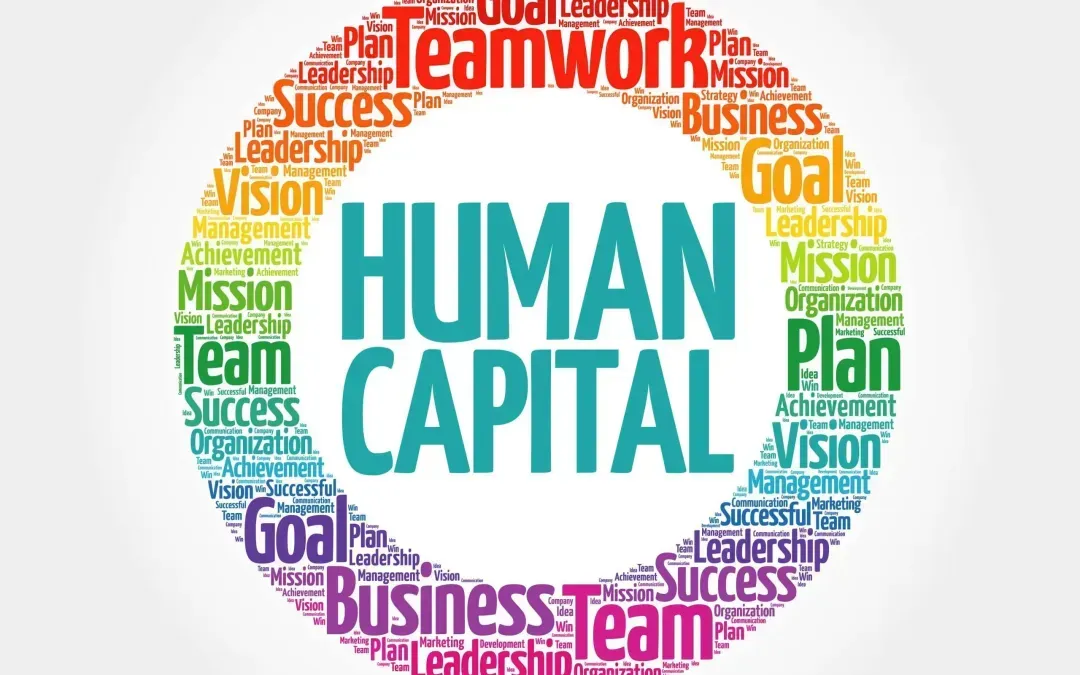
By Richard Seaman
•
July 29, 2020
Every decade or so, we experience an unforeseen economic tsunami. At Seaman Corporation, we navigated the oil crisis of the 1970s, the extraordinarily high-interest rates of the 1980s, the 9/11 terrorist attacks, the 2008 financial crisis, and now, COVID-19. As a business owner, you must recognize that severe economic disruptions are going to occur – so how is your organization prepared to deal with them? As the 2008 financial crisis was unfolding, Seaman Corporation, like most other businesses, was unexpectedly impacted, particularly when it came to revenue generation which quickly fell far below what was forecast. Fortunately, we had a robust strategic planning process and we were just completing our annual planning. This allowed us to recognize the crisis quickly and start to make adjustments. We also realized that, whenever we came out of the economic impact of this crisis, it would not be business as usual. Our world was going to look different, which could significantly affect our strategic goals. The fact that we had articulated our defined strategic objectives allowed us to make financial adjustments in a strategic way and not a short-term tactical way. In contrast, many companies failed to recognize quickly or early on how the 2008 financial crisis was going to impact their business. They also thought they could weather the storm until things came back to normal, failing to recognize there would be a new normal. When these businesses ultimately tried to respond to the crisis, they did it in a very tactical way, such as enacting 10% across-the-board cuts across all business functions, including reducing their workforce. Avoiding knee-jerk management responses in times of uncertainty and crisis requires implementing an ongoing strategic planning process. When your organization has a strategic planning process that has identified future strategic options and you also recognize there will be a new normal, you focus on which strategic options will be of value in the new normal. Then, you look very carefully at what your organization’s needs will be and what the human capital investment needs to be to support those strategic objectives. For example, in 2008 at Seaman Corporation, we were in the process of expanding our sales resources to grow our single-ply roofing business. Even under a new normal adjusted for the economic impact of the financial crisis, we concluded that there would still be a significant business opportunity in the single-ply roofing market. While we may have delayed the timing of new hire decisions, we did not reduce the investment in our existing sales resources that supported this strategic objective. To illustrate this point further, take the airline industry. Airlines look at their aircraft as an investment, not an expense. When their revenue drops off dramatically, as it currently is, they do not sell or cancel leases on their aircraft. They furlough excess aircraft but continue to invest in maintaining them. When air travel returns, the airline will have those aircraft ready to support their business. However, if leadership strategically looks at how the new normal will impact their business, they may reevaluate the type of aircraft they will continue to operate and then they sell aircraft that are not relevant to the strategic objectives in the “new normal” model, as many airlines are currently doing with their Boeing 747 fleets. Unless you already have a strategic planning process in place that allows you to adjust daily operations without compromising long-term goals, your management decisions can be reactive when a crisis occurs. Fortunately, in this current crisis with COVID-19, the government’s quick offering of the Payroll Protection Program for small businesses has allowed companies an additional two to three months to maintain their investment in their human capital while continuing to evaluate how this crisis will unfold. This has provided company leadership with more time to determine how the “new normal” will affect their future business model and strategic options and not make across-the-board tactical cuts, particularly to their human capital. Most multigenerational family businesses have already locked into this kind of strategic thinking because of their long-term orientation. Human capital is an investment, not an expense. If cuts need to be made to sustain present operations, you cannot cut core functions that will adversely affect your future business growth. Any workforce reduction we made in 2008 was about jobs that would not exist in the new normal we predicted in the future. In these deeply uncertain times, rely on your iterative strategic planning process to guide you. Remember: the planning process is more important than the plan itself. Ask yourself: What is your future business model? How will the crisis affect that model in the short and long term? What organization will you need to support your business model? And, most importantly, what investment must you continue to maintain in your human capital?

By Richard Seaman
•
June 15, 2020
An unforeseen economic disruption like COVID-19 causes many business owners to panic. Unless your business is fortunate enough to be considered essential in this crisis, the problems you face likely involve severely stunted demand and significant obstacles to supply. Decisions need to be made quickly to preserve the long-term viability of your enterprise. Making quick decisions during a crisis to make your numbers work for the short-term, however, can have a detrimental impact on your long-term aspirations. The key to being able to make good short-term decisions is having a well-articulated long-term plan. At Seaman Corporation, we do this by engaging annually in a robust strategic planning process, which I introduced in 1980, after benchmarking the process with accomplished experts. We still follow this planning practice today and I credit it for helping us pull through past significant and unexpected disruptions, including 9/11 and the 2008 financial crisis. In fact, since we put the practice into place, we have enjoyed sustained and consistent profitable growth while remaining in a strong enough financial position that allowed us to make the capital investments needed to support our growing business. I am confident that our leadership team is relying on our strategic plan today to make difficult decisions as they navigate the challenges posed by COVID-19. The Importance of Process in Building a Strategic Plan Having a strategic plan is important, but it is not the plan itself that leads to success. It is the process of building a strategic plan that makes an organization successful over time. The process forces senior leaders to evaluate key factors affecting the business. In my business, I have always insisted that strategic planning takes place on an ongoing basis, in our case annually. Engaging in this process every year keeps leaders informed about key factors affecting our business and, in turn, they make sounder decisions about the business if bumps show up throughout the year. To illustrate how this has played out successfully at Seaman Corporation, I’ll share a story. In the fall of 2008, we were completing our strategic planning process when the world financial crisis began to unfold. Because we had a planning process, we recognized earlier than many businesses that the macroeconomic conditions around the world were changing and these changes would prevent us from reaching our objectives as planned. We knew from our market studies and disciplined analyses that when we all came out of the financial crisis, the world and our markets would look different. We chose not to panic. We did not make short-term tactical changes, such as implementing 10% cost cuts across the board. Instead, we recognized which of our strategic objectives were still going to be viable and important to our growth after the recession. We made selective cost cuts that enabled us to continue investing in our priority strategic initiatives. As a result, though our first and second quarters were well below our forecast and below the previous year, by the fourth quarter we managed to achieve sales matching the previous year’s volume and we finished the year profitably. Because we had developed a road map through our strategic planning process, we were able to successfully navigate the challenges of the 2008 financial crisis. The planning process helped us identify the initiatives that would be critical to our long term future growth. It enabled us to choose wisely where to make spending cuts and where to continue to prioritize our investments. Key Steps to Building a Strategic Plan Building and maintaining a strategic plan is not a one-day event. It takes good leadership, discipline, and dedication. The following steps can help guide you as you initiate strategic planning in your business: Commit time and resources. Pick a time of year that is conducive for a strategic planning process to support your business and make it an annual ritual. Separate your strategic planning process from your annual tactical business planning. Keep the strategic planning process creative and focused on broader, long-term goals. Make sure you allow for the investment of senior managers’ time. Consider it a key component of their ongoing leadership development. Hire an outside resource as a facilitator. A quality outside facilitator can keep the process objective and honest, and elevate the strategic thinking by the team. Pick someone who will not be afraid to ask tough questions. Understand the Key Factors Affecting Your Business. Study micro trends and megatrends that affect your industry and stay current on government regulations that impact yours or your customers’ businesses. Evaluate Your Customers. Understand your customers’ needs and commit to staying close enough to them to know how, why, and when those needs may change. Analyze the Competitive Landscape in Your markets. Evaluate both foreign and domestic players. Perform a SWOT analysis on your own business . Always know your own S trengths, W eaknesses, O pportunities, and T hreats. Plan to be off-site for 1-2 days to execute the planning process. Removing leaders from their operational environment encourages them to disconnect from the daily demands on their time and yields more strategic thinking. Strategic planning is critical to the long-term sustainability of any organization. By implementing an ongoing planning process, organizations can be more adequately prepared to navigate through unforeseen disruptions, like COVID-19, staying afloat. And, they will always be prepared to respond to the ever-changing, dynamic economy.
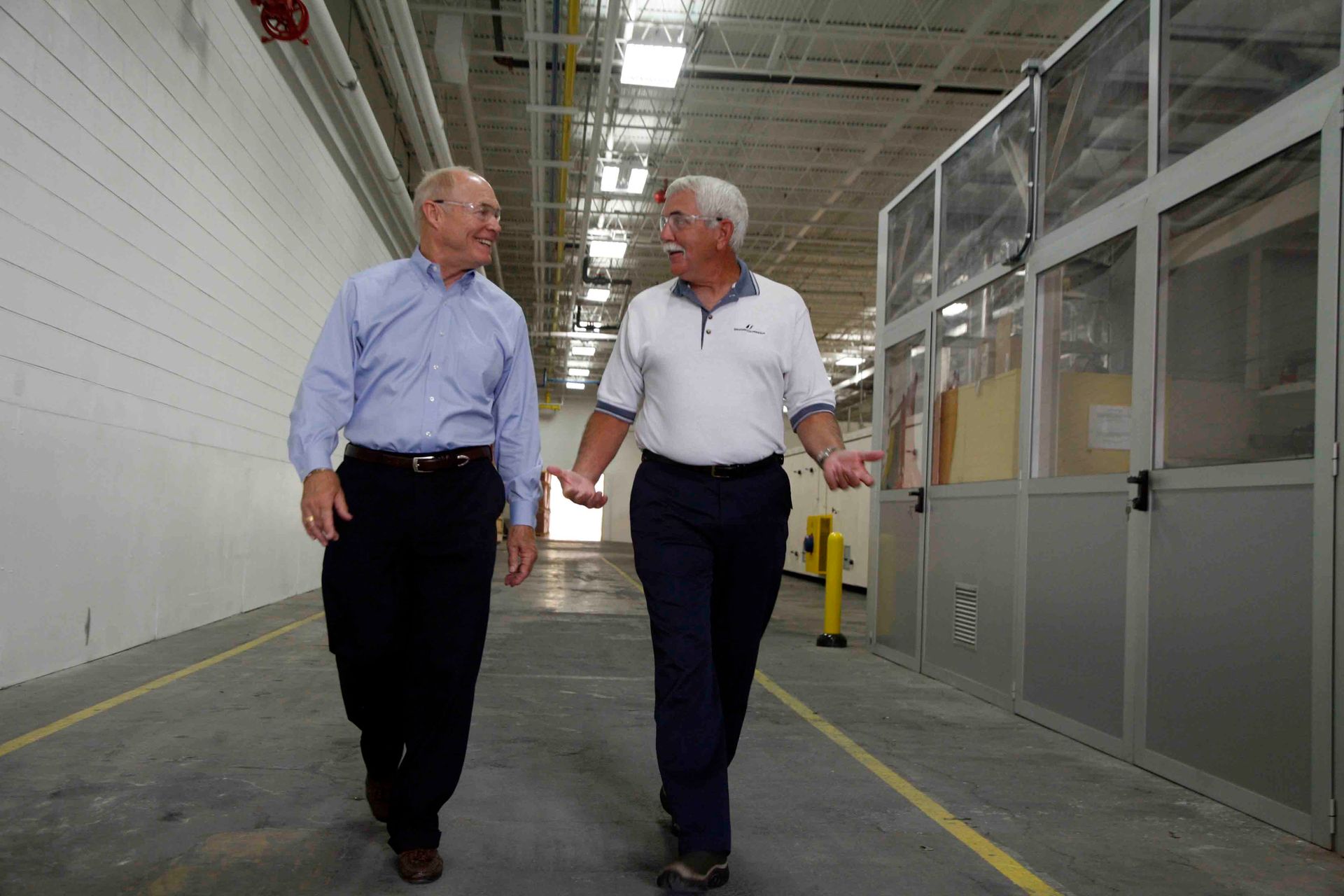
By Richard Seaman
•
May 7, 2020
Seaman Corporation recently responded to a call to donate fabric to a project to make field hospital cots for pop-up medical centers serving patients during the COVID-19 crisis. A group of businesses from Northeast Ohio collaborated for the effort. Within two weeks of the call, they delivered the first 1,000 portable cots to a location in Long Island, New York; and a week later they delivered the same amount to respond to medical needs in Columbus, Ohio. Orders are now pouring in from states across the USA. What started out as a dream to help people during this crisis in some way has turned into a genuine business opportunity for all who are participating. Meeting people’s needs is in Seaman Corporation’s DNA. My father and mother had a high school education, and with as much they built the foundation of our business, understanding the importance of meeting people’s needs. In the first year of production, my father coated 16,000 yards of truck tarp fabric and sold it to a local tarp manufacturer. In the first year of exposure to the elements, all of this fabric failed. My father discovered the problem: he had failed to include an ultraviolet light inhibitor. Because of his commitment to satisfying his customer, he corrected the problem and decided to replace the entire 16,000 yards (worth an entire year of production) at no cost to the customer. With this act, he set the standard for our business’s commitment to quality and customer satisfaction. After college, I stepped confidently into my role in the family business, eager to put my academic achievements to work. As Plant Manager, I measured success by monitoring daily, weekly, and monthly production results. Life on the job, however, soon humbled me. Because of production and shipping pressures, I made the decision to ship product to our largest customer that was functionally sound, but with some minor aesthetic flaws. Before I had the chance to visit the customer and respond to his complaints, he made the decision to switch suppliers. Because I was so focused on my needs, I had failed to meet my customer’s needs, and thus my biggest contribution after college became losing our largest customer! I realized that to build a business that would last, we would have to really cherish our relationships with customers and see quality through their eyes. Enter the CARE Philosophy With this in mind, I set out to create and institutionalize a philosophy at Seaman Corporation that could serve as a guiding light for our associates and keep them focused on quality and service for our customers. Together, we came up with a program we call CARE: C ustomers A re the R eason for E xcellence. We extended this acronym to serve an internal focus on quality, too: C ompetitive A dvantage R equires E xcellence. The CARE philosophy at Seaman Corporation offers our associates a set of principles for how to conduct business on a day-to-day basis, keeping them focused on quality and putting our customers’ needs first. The principles of the CARE program include leadership, 100% total customer satisfaction, continuous quality improvement, strategic quality planning, human resource development, quality assurance, and systems measurements. Each one of these principles requires an investment of time and money. We showcase CARE to our customers by bringing them to our company and sharing our process. We continually invest in our never-ending quest for quality improvement. We make painstaking efforts to cut costs to keep our product pricing competitive for the marketplace. And we invest in our people, recognizing that we cannot grow or sustain our business if we don’t have a motivated and satisfied workforce. Hence, Seaman Corporation invests in a robust human resource function that is dedicated to associate development programs. It isn’t easy or inexpensive to put people first. But as shareholders of a multi-generational family business, we see ourselves as stewards. We realize our role comes with a big responsibility to people. In order for our enterprise to survive long-term, we must invest in the needs of our customers, our associates, and our communities.

By Richard Seaman
•
April 1, 2020
Lessons from Businesses that Last Multi-generational family businesses learn to expect economic disruptions. In the last century, there have been many: world wars, the Great Depression, the 9/11 terrorist attacks, the 2008 recession, and now the COVID-19 health crisis. If your business is decades old or has moved through generations, you’ve already survived at least one of these significant events. We can learn a lot from businesses that have pulled through such challenging disruptions. My family’s business is 71 years old, and we have had to pull through a few turbulent times. Doing so has helped us develop the stamina to face this current crisis with optimism instead of getting mired down by fear. Here are four strategies to help you maintain your long-term view during this short-term crisis. Keep Your Eyes on the Horizon Business owners who are committed to a multi-generational model have the liberty of being able, even during times of crisis, to maintain a long-term view. Decisions are made for what is in the best long-term interests of customers and employees, rather than the next quarterly or annual earnings report. Multigenerational businesses recognize the important role employees play in sustaining the business, and often consider employees’ long-term welfare before profits. By focusing your eyes on a distant horizon and keeping key stakeholders in mind, decisions about how to navigate the immediate future can become clearer. Think Creatively Without freedom of mobility, we can’t offer our goods and services in the same way. Worldwide, leaders across all sectors are being forced to overcome obstacles to survive. Restaurants are learning how to promote and grow takeout services using food delivery technology platforms like GrubHub, DoorDash, and UberEats. Academia is learning new ways of delivering content to students beyond the classroom. Mental healthcare professionals are finding ways to support their clients through online formats, and telemedicine is offering doctors the opportunity to care for patients remotely. Businesses are better understanding the efficiency and effectiveness of virtual meetings utilizing teleconference platforms such as Skype, Zoom, and GoToMeeting. We can use this health crisis, and the severe limitations it is placing on all of us, to inspire creative problem solving and reinvigorate the spirit of innovation in our organizations. Be Open to New Norms Many of us are discovering that, in some ways, these new ways are better. As businesses are finding new ways to manage and conduct commerce, sometimes with greater efficiencies and customer satisfaction, consumers are finding easier ways to procure products and services. We must realize that this crisis is redefining “business as usual.” When we come out of this crisis, there will be new norms. As business leaders, we cannot limit ourselves to thinking only about how to navigate the challenges of the next several weeks or months. We need to be thinking creatively about how this experience could positively impact our business models going forward. Prioritize Health Seldom do we have enough time to prioritize our health. Now, by the nature of this crisis and government orders, we must. We also have to consider how our health impacts the health of everyone around us. While quarantines and shutdowns impact our productivity goals, we can use the extra space in our lives to savor and protect our own health. Building our immunities and strengthening our exercise habits has far-reaching benefits beyond this time of crisis. Prioritizing our own health enables us to be vital for those we support in our homes, our communities, and our businesses. We do not know how long this current COVID-19 crisis will last—at this moment, no government or healthcare leader can accurately predict this. In the short-term, it is our duty to stay informed and follow the best practices and advice given by these leaders. Fight your fears by adopting strategies today that help you think more creatively, remain open to change, get healthy, and stay focused on your long-term dreams.
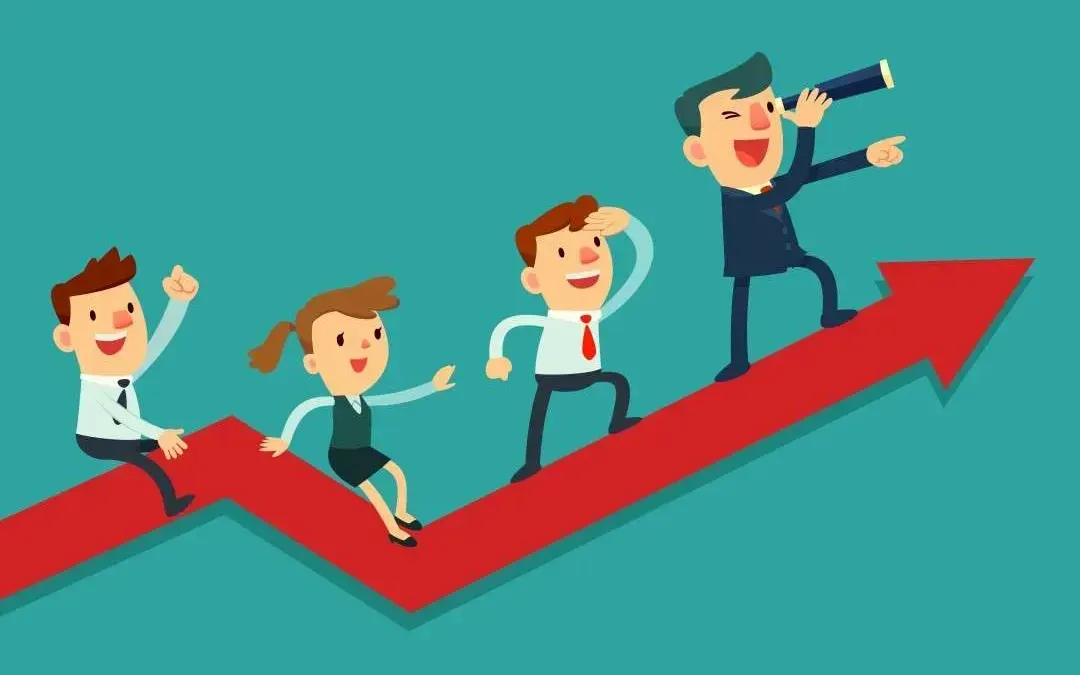
By Richard Seaman
•
March 17, 2020
During the early stages of building a business, most entrepreneurs are not thinking generationally. They are instead engrossed in the details that make start-ups work: perfecting a product or service, acquiring adequate start-up funding, identifying a customer base and determining how to reach it, and making payroll. Many entrepreneurs have grand hopes of surviving the life cycle of a new venture, including a smooth passage through the “valley of death”—when debt is taken on but product launches are not taking off. Then, they begin crafting an exit strategy. The legends of Silicon Valley are inspiring, after all. Starting a business with an exit plan in mind is popular. It is an idea synchronized with the values of modern times: think, act, and win quickly, then move on to pursue the next success. It can also get pricey. Surviving the valley of death can require continual injections of funding. This is one of the finance-centric models of entrepreneurism. Another such model is a family business that is founded to support the economic needs and lifestyle of the founding family. Often times these businesses serve niche markets and if the next generation is not attracted to join the business, harvesting the business is easier than trying to change grown children’s minds by forcing an ownership succession plan. Finance-centric models of entrepreneurship can be exciting. If they are successful, there is the possibility of generating big gains. The number of people that benefit from these gains, however, is few: those with close ties to the ultimate financial transactions. In 1949, my father had his high school degree, experience as a pilot flying B-24 planes in World War II, and five children. He and my mother decided to start a business to feed their family. They too were at first focusing on the immediate needs of their new venture. As children of the Great Depression, however, their history motivated them to form a longer-term dream. They hoped their business would grow big enough to feed their family and last long enough to offer their children a job, the highest prize at that time. From the very beginning, my parents were thinking generationally about their business. Seven decades later, this business continues to survive. The business my parents founded, and which my family has continued to lead, is an example of a multi-generational stewardship model of entrepreneurism. A multi-generational family business model benefits: Family members— with a professional network, job opportunities, financial security, a source of pride, and a unified purpose Associates— by offering a stable work environment where they can build a career and grow professionally without the threat of corporate buyouts and ownership changes. Family businesses have the financial freedom to make decisions that benefit associates and create loyalty, like investing in their individual development. Customers— by buying from a secure source, dedicated to consistently providing quality products and services and offering reliable care for the customer Community— with jobs and economic transactions that support local families and the local economy, and with financial philanthropy that responds to community needs The number of people who stand to benefit from entrepreneurial models that are set up with generational forethought is many. It requires owners, however, to wear the hat of “steward” and trade-in short-term gains for broader, long-term value.

By Richard Seaman
•
February 11, 2020
It was the summer of 1966. I was a rising senior at Bowling Green State University in Toledo, Ohio, and I had convinced my father, then the founder and president of our family’s textile business, to allow me to take a three-week trip abroad. We would begin in Copenhagen; travel to Helsinki; move onward to Leningrad and Moscow; then visit Bucharest, Prague, and Czechoslovakia before finishing in Rome. I was young, naïve, and terribly excited to be embarking on my first big international adventure outside of my hometown, a village of 400 people in the heart of Amish Country in Ohio. Our first evening in Copenhagen, following dinner, I joined three fellow students to take a walk through Tivoli Gardens, the city’s Central Park. There, we met several Danish students and began talking with them. I thought certainly they’d envy us when they learned we were visiting from America. But when we told them, I was instead shocked by their response. “Well, how nice, but we certainly would not want to be Americans,” said one young woman. “Why not?” I asked. “You have many benefits in your country and you’re doing quite well, but you are only 250 years old. You have no history, no long-term culture.” I had assumed that pride in your country, even at our young age, was measured by financial or material success, or financial opportunity. This Danish woman saw things much differently. What she valued was the multigenerational, centuries-old history and culture of her homeland. GDP per capita was not part of that consideration. These divergent cultural viewpoints are evident in our paradigms about family businesses in the United States. In the U.S., success in family business tends to be measured by its profitability and ability to sustain the ever-growing lifestyle of the people running it. Motivation to pass the business on to the next generation is dependent on one or more of the children being willing to have their careers in the business—oftentimes primarily to support the lifestyle of the next generation. If there is no one in the next generation who wants to work in the business, then the obvious exit strategy is to harvest it and pocket the money. In fact, growing a business for a high potential harvest event is one of the most common models of entrepreneurship embraced today. When my father and mother founded their business in 1949, my father had a clear vision: to build a business that would support his family and survive him. He died young, just 17 years after they started this effort. Having worked by his side, I took the lead when he was gone and have found numerous good reasons to adopt the same vision. Fortunately, along the way I have discovered entrepreneurial models that focus on the concept of multi-generational stewardship while also staying focused on financial results. Embracing a multigenerational ownership model requires business owners to take a longer-term view of success. We have to utilize resources generated by the business differently and focus on building the infrastructure of our businesses, considering not only one great innovative idea but many, as well as the human capital, marketing, sales, operational excellence, finance, and governance processes required to support a longer-term vision. We have to bake long life into our strategy. Why bother? Family businesses are a more significant part of the fabric of our national economy than most people realize: • The Family Business Review reveals that eight to nine out of ten businesses in North America are family-owned and generate roughly 64 percent of the Gross Domestic Product (GDP) of the U.S., or $5,907 billion. • In my book, A Vibrant Vision, I debunk the commonly held image of family business as a “mom-and-pop shop.” The fact is that some of the largest businesses in our country are family-owned or controlled, including Wal-Mart, Cargill, Ford Motor Company, Comcast, Mars, Milliken & Company, Levi Strauss, and the J.M. Smucker Company. • An Edelman research study offers additional support, by showing that 75 percent of people would prefer to do business with a family-held business and 54 percent would prefer to work for a family business. Customers in the study even reported that they would be willing to pay more for products or services that come from a family-held business. Realizing the value family businesses add to our national economy and appreciating the people, principles, and processes we cultivate within our family businesses may offer owners motivation to think twice about preserving these treasures and passing them on.
